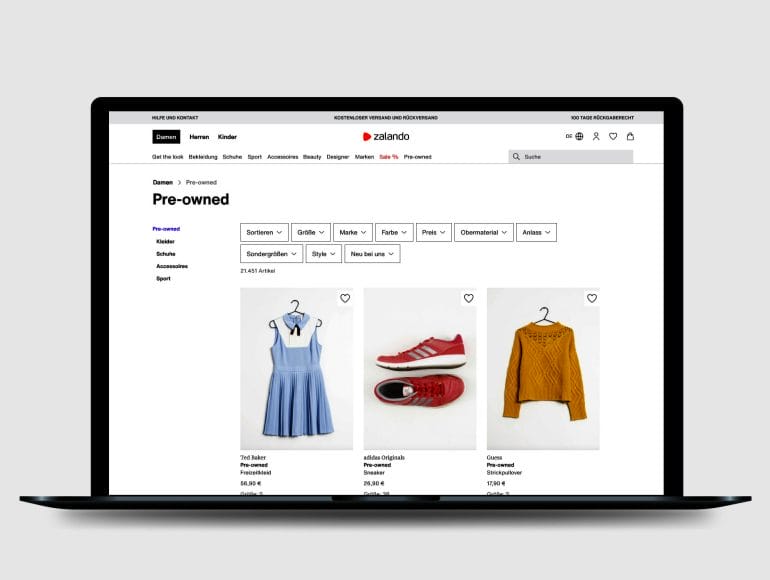Second-hand is the must-have of the moment. To such an extent that brands have come to upgrade its mission even from a creative point of view, retrieving their rich archives. At the same time, though, they are investing massively in platforms for the reselling of “real” used goods. But success, in spite of the pressure of demand, is not to be taken for granted, as Zalando explains
Zalando needs no introduction. And neither does their financial report, which, in the first quarter of 2021, registered an exceptional growth by 46,8% of revenues, that reached 2,2 billion Euro in three months. What needs an explanation, if anything, is their decision, dating back to 2020, to start a project of retail inside their platform. A project that, a few months after being published online, gave the German e-tailer an occasion for thinking, that maybe they had not expected. Because what was once vintage and now is called second-hand can have a limit in consumers’ trust.
Zalando’s service
Zalando’s pre-owned service allows registered users to sell and purchase second-hand clothing. Procedure is handled by the German headquarters. Articles undergo quality check, they are classified, for users to view them, and they benefit from Zalando’s shipping, payment options and returns management. After selling, advertisers receive a coupon to be used on the same platform. Or else, they can make a donation to one of the two partners of the initiative: Red Cross Germany or WeForest.
The pressure of demand
Well, a few months later, David Schneider, co-founder of the German platform, explains the following to L’Economia, insert of the Corriere della Sera daily magazine. “On the one hand, we notice a significant increase in the demand for second-hand items. On the other hand, we see a difference between purchase attitude and behaviour”. A real dyscrasia, supported by meaningful numbers. “A survey we made in 5 European markets, including Italy, highlights that 61% of consumers believe that buying second-hand clothing is a very good way to make sustainable purchases. While 49% think that brands offering a section or a dedicated shop help to act in a more sustainable way”. So far, so good? Not at all.
Consumers’ trust
According to Zalando, the last (definitive?) leap in quality is missing. “When you go and see, what the real behaviour of consumers is – Schneider explains –, you find out that only 25% buy used products regularly. If you ask why we have this difference between intentions and habits, many report worries about hygiene and lack of convenient options. That is why, one of our strongest endorsements to companies is to use a comprehensible language”. What is still totally missing, in the end, is consumers’ trust.
Read also:
